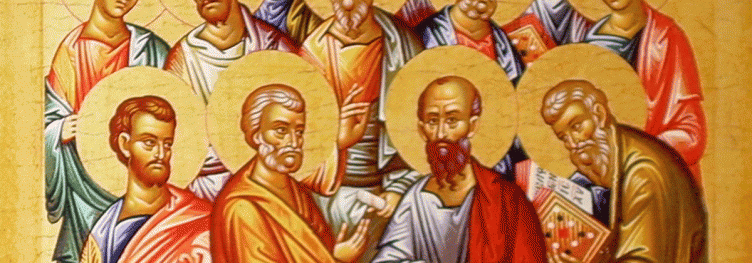Thanks to Baylor Press for allowing me an opportunity to review Matthew W. Bates, The Hermeneutics of the Apostolic Proclamation: The Center of Paul’s Method of Scriptural Interpretation (Waco: Baylor University Press, 2012).
This monograph is a revision of Bates’ doctoral work done under David Aune at the University of Notre Dame. Bates begins in the first chapter with a historical survey of relevant literature and revisits and engages various viewpoints at the end of the book, chapter 6. Chapters 2 and 3 examine Paul’s own statements about Scripture and a few hermeneutically significant passages. Chapter 4 introduces prosopological exegesis before looking at Paul’s own employment of that method in chapter 5.
The monograph is wide-ranging, at times feeling disjointed, yet makes two important (and related) claims: (1) Paul’s hermeneutic is centered on the apostolic proclamation, and (2) Paul’s hermeneutic makes use of prosopological exegesis–the practice of ancient readers discerning various voices behind their Scriptures–a practice exemplified “…not just in early Christian circles, but also in philosophical paganism and Hellenistic Judaism in literature contemporaneous with Paul” (p. 215), as Bates helpfully shows in chapter 4.
Bates uses a diachronic intertextual method (explained nicely with related terms defined on pp. 53–55) whereby he focuses on Paul’s exegesis in the context of other early Christian interpretations of Scripture, including later writers. In this way, he both appreciates Hays’ method and goes beyond it (following Kristeva farther, as it were):
Hays’ intertextual model obscures the need to look beyond the source text to coeval and subsequent texts within a fully healthy intertextual model (p. 51).
This problem pervades much of the work on “OT in NT” studies, according to Bates. His inclusion of Christian “co-texts,” “post-texts,” and “inter-texts” is especially evident in chapter 5 where examples of prosopological exegesis are examined in Paul.
Two chapters are given to Paul’s own statements about his hermeneutics and the Scriptures (e.g., 1 Cor 15:3–11; Rom 1:1–6), and when taken together with a look at Paul’s use of prosopological exegesis, Bates argues that
…Paul received, utilized, and extended an apostolic, kerygmatic narrative tradition centered on certain key events in the Christ story as his primary interpretative lens–a narrative traditions that already contained a build in hermeneutic. …From Paul’s perspective, this christocentric narrative can be described as apostolic in origin and kerygmatic in content and function (pp. 56–57).
Thus an examination of Pauline texts about the Scriptures/hermeneutics (esp. 1 Cor 15:3–11 and Rom 1:1–6 ) shows that Paul’s hermeneutic is dependent on “pre-Pauline protocreedal materials” that are both apostolic and kerygmatic. From this Bates synthesizes a “mastery kerygmatic narrative” that informs Paul’s hermeneutic (eight stages) and extends it (to twelve) as follows (p. 108):
- preexistence
- human life in the line of David
- death in behalf of our sins
- burial
- existence among the dead ones
- resurrection on the third day
- initial appearnaces
- installation as “Son-of-God-in-Power”
- subsequent appearances to others
- appearances to Paul
- apostolic commissioning
- mission to the nations
Bates is to be commended for offering a genuinely new way of understanding Paul’s hermeneutic, introductions to the important notion of prosopological exegesis, the significance of precreedal material on Paul’s hermeneutic, and the significance of post-NT Christian texts for understanding Paul’s hermeneutic. The argument occasionally loses focus, but most often when it does, a nugget or two is still to be found.
One last quibble: Schleiermacher, Harnack, Schweitzer, and Bultmann are characterized as having an “unhermeneutical Paul,” by which Bates means something like a Paul who is “…driven to the scriptures only by external pressures” (p12). While the description has some heuristic value, this brief section on these earlier scholars did not give confidence that the author was sufficiently familiar with those he was summarizing.
